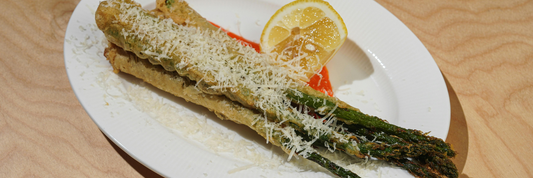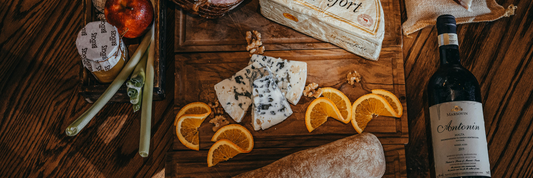Poke and salad shops are uniquely suited to lead the zero-waste movement. Their reliance on fresh, whole ingredients and build-your-own menus makes them agile in terms of sourcing, preparation, and packaging. At the same time, the fast-casual model often generates high volumes of single-use waste from plastic bowls and utensils to food scraps and delivery packaging.
Embracing zero-waste practices doesn’t mean overhauling operations overnight. It means rethinking systems to design out waste at every stage from procurement and prep to packaging and post-consumption. This not only improves your environmental footprint but also resonates with the growing number of customers actively seeking sustainable dining options.
-
How to deal with Food Spoilage in Takeout & keep Poke and Salads Fresh, Delicious and Sustainable
-
How to Start a Poke Bowl Business: Tips, Tools, and Strategies for Success
Rethink Packaging: From Disposable to Circular Systems
 Single-use plastics remain one of the most visible and impactful waste sources in poke and salad shops. To reduce this footprint, operators should shift from linear to circular packaging systems. This involves:
Single-use plastics remain one of the most visible and impactful waste sources in poke and salad shops. To reduce this footprint, operators should shift from linear to circular packaging systems. This involves:
- Compostable Packaging That Actually Breaks Down: Choose certified compostable materials like sugarcane fiber (bagasse), PLA (plant-based bioplastics), and FSC-certified kraft paper. Ensure these are compatible with your region’s composting facilities.
- Durable Reusables for In-House Dining: Encourage on-site diners to use washable, durable bowls, trays, and cutlery. Some shops provide metal or ceramic serviceware to reduce disposables entirely during lunch rushes.
- Loyalty-Based BYO Incentives: Implement a program that rewards customers for bringing their own containers or cups. Offer discounts or loyalty points, and display leaderboards or reusable-user shoutouts to gamify the experience.
- Closed-Loop Takeout Systems: Work with local startups or services that offer take-back models for reusable containers. These closed-loop systems allow customers to return used containers for sterilization and reuse.

Minimize Food Waste: From Inventory to Innovation
Poke and salad bars handle large volumes of perishable produce and proteins. Without careful systems, food waste can accumulate quickly. Combat this by:
- Smart Purchasing Systems: Use POS and demand forecasting tools to align orders with customer trends and minimize overstocking. Track sell-through rates for each topping to reduce over-prepping.
- Cross-Utilization of Ingredients: Integrate ingredients across multiple menu items. For example, mangoes used in poke bowls can also be blended into smoothies or dressings, and beet greens can be sautéed or pureed for sauces.
- Upcycling Edible Scraps: Turn vegetable trimmings into broths or pickles, and use overripe produce in infused vinegars or house-made marinades.
- Batch-Based Prep Models: Instead of prepping everything each morning, stagger preparation in smaller, demand-based batches to reduce end-of-day spoilage.
- Optimize Back-of-House Operations: Waste Reduction at the Core
Operational waste energy, water, and materials contributes to your carbon footprint and operating costs. Zero-waste shops address these areas holistically: - Water & Energy Efficiency: Install low-flow spray nozzles, energy-efficient refrigerators, and motion-activated lighting in prep areas. These reduce resource use without compromising functionality.
- Digital Kitchen Management: Go paperless in your inventory, scheduling, and training systems. Use digital whiteboards, tablets, or apps to manage daily prep and reduce unnecessary printing.
- Staff Waste Training: Build a culture of sustainability from the inside. Train staff to sort waste properly, reuse prep containers, and report overproduction. Make zero-waste a KPI for your kitchen team.
- Composting Infrastructure: Partner with a local compost hauler or start on-site composting for food scraps. Place labeled bins in both the kitchen and customer areas, with visual guides for easy sorting.
Source Locally and Ethically: From Farm to Fork with Accountability

Poke and salad shops are heavily dependent on seasonal, fresh ingredients making them natural allies of local farms and sustainable seafood suppliers. Key practices include:
- Direct-to-Farm Relationships: Buy directly from local farms or cooperatives to reduce food miles, improve freshness, and support community resilience. Ask suppliers about regenerative practices.
- Climate-Smart Produce Choices: Integrate hardy, drought-resistant vegetables and grains into your menu (e.g., lentils, chickpeas, kale) to reduce your menu’s environmental impact.
- Traceable Proteins: Partner with transparent seafood suppliers offering line-caught or sustainably farmed fish. Avoid overfished species and prioritize those certified for environmental impact.
- Transparent Labeling: Highlight locally grown, organic, or regenerative ingredients directly on your menu. Customers value the story behind their bowl don’t be afraid to tell it.
Engage Customers in the Zero-Waste Journey
Your customers are your strongest allies in reducing waste if you empower them to participate meaningfully. Consider:
- Storytelling Across Channels: Share your zero-waste wins and behind-the-scenes processes via social media, emails, or signage. Explain how food scraps are composted or where your compostable containers go.
- Interactive Signage at the Point of Purchase: Use menus or kiosks to educate diners about low-impact options, reusable discounts, or waste reduction goals.
- Green Loyalty Programs: Reward sustainable behavior like bringing a reusable bowl or choosing a seasonal special with points or badges that lead to perks.
- Events That Teach and Connect: Host sustainability workshops, composting demos, or farm meet-and-greets to deepen your connection with the community and inspire shared responsibility.
How Kimecopak Supports Your Business’s Sustainability Goals
Kimecopak is a trusted supplier of eco-friendly packaging for restaurants and small businesses across North America. We specialize in providing sustainable disposable packaging, including:
-
Take-out containers: paper bowls, soup cups, sushi trays, and more
-
Wooden cutlery: compostable utensils made from bamboo and birchwood
Beyond packaging, Kimecopak also helps streamline your operations with benefits like fixed pricing, 5–7% cost savings, free warehousing, and scheduled deliveries for our long-term partners.
Why Choose Kimecopak?
- Lower your environmental footprint: Our packaging is crafted from compostable and recyclable materials, helping your business reduce waste and promote sustainability.
- Enhance customer experience: With modern, durable packaging, your brand leaves a lasting impression on customers.
- Cut costs smartly: Flexible pricing options and operational perks help you reduce packaging expenses without compromising on quality.
If you’re seeking a dependable, eco-conscious packaging partner, Kimecopak delivers solutions that support both your business and the environment.
Conclusion
Zero-waste isn’t an overnight transformation it’s an ongoing commitment to design better systems for people and the planet. Poke and salad shops are perfectly poised to lead this charge, thanks to their flexible menus, fresh ingredients, and nimble service models. By rethinking packaging, reducing food waste, streamlining operations, sourcing mindfully, and inviting customers into the process, your shop can serve up more than flavor it can serve a future worth sustaining.




